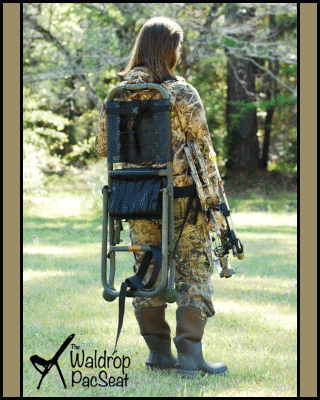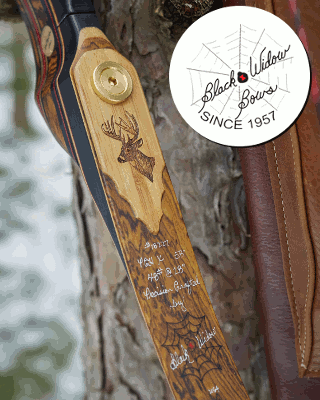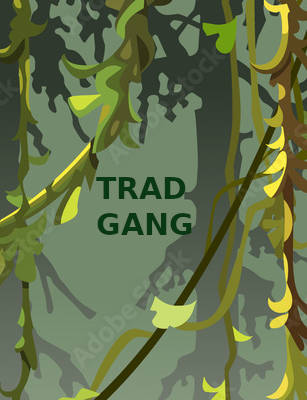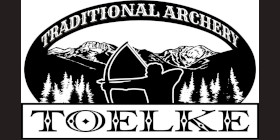Terry,
I don't know if the "bait debate mess" will be as bad for you guys down there or not, but it's a mess up here in Michigan.
Especially so if you're a traditional archer who wants to hunt from the ground and rely on natural deer movements.
Here's a story from Minnesota, and they banned baiting years ago. But once that genie is out of the bottle, you'll never get it back in.
This line from the Minnesota DNR talking about the Michigan DNR tells you all you need to know...
"Our counterparts in Michigan and Wisconsin warned us that if there wasn't support for baiting in Minnesota yet, there would be soon, and that it would be very hard to get the genie back in the bottle,'' said Schad. "They told us that baiting was basically out of control in Michigan, that disease was going to be a big issue and that baiting had changed the entire face of hunting over there, from skills-based to who could put out the most bait.''
Here's the whole story...
http://www.dnr.state.mn.us/volunteer/sepoct08/bait.html The Race to Bait
To bait or not to bait -- that is a question some hunters ask as firearms deer season approaches, even though deer baiting in Minnesota has been outlawed for almost two decades.
By John Myers
Conservation officer Tim Collette had a pretty good hunch what was going on in the woods southwest of Longville. He was acting on a tip that three hunters on a tract of public land were illegally using corn to bait deer to their hunting stands -- miles from the nearest cornfield. He even saw spilled corn on the ground.
Collette approached one hunter in the group who was standing over a freshly field-dressed deer. The man insisted they hadn't put any corn on the land for more than two weeks -- in accordance with Minnesota's law that bans feeding deer for 10 days before and during deer season, except in northwestern Minnesota.
Collette wasn't buying it.
"He still had his knife in one hand, so I asked if I could borrow it,'' Collette recalled of the incident during the 2007 firearms deer season. "I reached down and cut open the deer's stomach, and the corn just poured out.
"He looked at me and said 'I guess I'm screwed now.' ''
The three hunters admitted their crime, and Collette issued citations -- $382 each for deer baiting. And he confiscated the deer. The three violations were among the 100 issued last year in the northeast region, making illegal deer baiting the region's fourth most common violation during the firearms season. Most violators don't get caught. Some officers report that nearly half the deer stands they check have evidence of illegal baiting -- a violation seldom seen a decade ago.
Seventeen years after the Department of Natural Resources banned the practice, agency biologists say there are compelling reasons to keep baiting illegal -- especially the potential spread of disease: Baiting brings too many deer too close together.
Baiting Everywhere.
Deer baiting may be illegal, but it's not hard to find when firearms season opens in November.
"I fly over deer camps on the day before the season and see the feed bags in the back of pickups and on four-wheelers,'' said Al Buchert, a conservation officer-pilot in northeastern Minnesota.
"I'm seeing baiting everywhere I fly, even in the farm areas,'' said Lt. Tom Pfingsten, a conservation officer-pilot who patrols much of the central portion of the state. "[In one case] they dumped corn in the corner of a plowed field, right in front of a deer stand.''
Some baiters have taken to using black sunflower seeds or placing feed under balsam fir branches to avoid detection from the air. Near the Twin Cities, a baiter strung up camouflage netting to conceal the bait pile from air surveillance.
Conservation officer-pilots take photographs and mark GPS coordinates of bait piles and forward the information to officers on the ground. The fine for illegal baiting is $300, plus $80 or so in court costs. Another $500 can be tagged on for restitution if a deer is seized. Guns may be confiscated as well. But the threat of a citation doesn't seem to be stopping baiters from hauling feed into the forest.
"It's one of those things I shake my head at because I don't understand why so many people are doing this,'' said Mark Johnson, executive director of the 19,000-member Minnesota Deer Hunters Association. "It's not going away. Baiting is a big problem that's getting bigger across more of the state.''
Why Bait?
Opinions and attitudes about baiting vary from hunter to hunter, from state to state, and even depending on the quarry. Baiting has long been considered among the most heinous of waterfowl hunting crimes and remains a violation of state and federal waterfowl regulations. Yet baiting is legal, mostly accepted, and widely considered necessary for bear hunting in Minnesota because bear are more nocturnal than deer and harder to hunt based solely on their natural movements. Without bait, bear hunter success rates would drop significantly in Minnesota's thick forests.
Deer baiting is accepted in some states (such as Michigan, Wisconsin, Texas, Maryland) and shunned in others (Missouri, Mississippi, Iowa). In Minnesota three-fourths of MDHA members oppose baiting for deer, according to a member survey.
Randy Willie of Carlton said some of his fellow Minnesota deer hunters see their neighbors in Wisconsin baiting and wonder why they can't do it here. But he said, "Most guys don't want it.''
Aside from biological issues such as the spread of disease, Willie opposes baiting because it doesn't follow the fair chase ethic.
"I've hunted over bait in Wisconsin because it seems like everybody does it over there. But I feel so damn guilty, I don't even enjoy it,'' Willie said. "You see more deer with bait. But most of them are does and fawns. I don't like it.''
Despite the overwhelming perception that baiting helps hunters bag more deer, that's not necessarily the case. A 2001 Wisconsin study showed surprisingly little difference in success among baiters and nonbaiters. A South Carolina study showed nonbaiters shot more deer in less time afield than baiters did.
It would seem Minnesota hunters don't need another edge over deer. There are an estimated 1.2 million whitetails in the state, among the highest number ever recorded here. Hunters bagged some 260,000 deer last season, fourth on the all-time harvest list and not far from the top years. Hunter success rates in recent seasons have been consistently high; and hunters in some areas can shoot three, four, five, or more deer each season simply by buying extra tags.
The MDHA's Johnson sees increased illegal baiting as a symptom of larger societal problems -- namely laziness and impatience. Johnson said people's lives are so busy that they aren't stopping to enjoy the real attractions of deer season and deer camp -- fresh air in the autumn woods, the annual gathering of friends, and matching wits with nature.
"Baiting is part of the quest for instant gratification. Some people don't want to work for what they get,'' Johnson said. "What's sad is that many of these people haven't figured out that the really good part of hunting is working for it.''
Deer season once meant several days or a week at deer camp or the old family farmhouse, with lots of time to linger in the woods and maybe bag a buck, Johnson said. Now, for many hunters, deer "season'' often boils down to sitting in a tree stand for a day or two before having to rush back to the city for their youngster's sports practice, social functions, or work.
Capt. Ken Soring, northeastern regional manager for DNR Enforcement, said some baiters are entertaining guest hunters on their land and working to assure the visitors have success. Many cases also involve fathers baiting for their sons and daughters.
"I compare it to the hockey dad who wants to see his kid score a goal so much he can't control himself. We've got dads in the woods now who want their son to get a deer so bad they're willing to break the law and break the hunting code of ethics to do it,'' Soring said. "What I'd rather see is the dad out there teaching the skills like scouting and finding deer sign and working the wind.''
Johnson and Soring said hunting DVDs and cable television shows often feature repeated hunter success shooting big-antlered bucks. Often, there's a pile of bait or even a commercial deer-feeding machine visible in the background. Baiting, feeding, and planting special food to attract deer has become a multimillion-dollar national industry.
In some cases, officers get the "everybody's doing it'' excuse.
"It's a form of peer pressure. They see someone else bait and have success,'' Soring said. "And if the next deer camp over is baiting, they think they have to bait to keep up.''
The Right Move.
Without much debate, and without a crisis at hand, the DNR banned deer baiting across the state in 1991. DNR Fish and Wildlife director Dave Schad was the division's big game leader back then. At the time Minnesota had little tradition of baiting, though problems were mounting in some states to the east.
"Our counterparts in Michigan and Wisconsin warned us that if there wasn't support for baiting in Minnesota yet, there would be soon, and that it would be very hard to get the genie back in the bottle,'' said Schad. "They told us that baiting was basically out of control in Michigan, that disease was going to be a big issue ? and that baiting had changed the entire face of hunting over there, from skills-based to who could put out the most bait.''
Minnesota DNR leaders discussed enacting the ban on baiting to preserve the fairness, quality, and tradition of the state's deer hunting. But the key reason then and now is the spread of disease.
According to Schad, deer that eat from the same pile or feeding station have more face-to-face contact. That contact spreads disease faster. Biologists say deer eating together in planted fields or historic wintering yards don't have nearly as much contact as deer being fed or baited.
"There's just no time in nature when they are that close, nose-to-nose, for that much time,'' Schad said, citing fears of bovine tuberculosis and chronic wasting disease.
Baiting also changes deer movement, pulling animals from one area into another. Increased movement leads to more highway crossings and traffic accidents. Sometimes the move causes animosity between landowners vying to see or shoot more deer. In some areas, baiting pulls deer from public to private land, essentially privatizing a public natural resource.
Officer Collette saw baiting concentrate deer near Pine River last fall. On 500 acres owned by a group of hunters, he found 11 of 13 stands had been illegally baited with piles of oats. Collette asked the violators why they didn't just plant crops on their land.
"They said it wasn't worth the effort for a couple days hunting, that baiting was easier,'' Collette said. "Right next to those guys I ran into a father hunting with two sons, 13 and 14. They were hunting on public land and doing it the right way, and they didn't understand why they weren't seeing any deer. I never did tell them there was a ton of oats sitting 200 yards away.'' (Collette didn't tell the family because he hadn't yet busted the nearby culprits and didn't want to expose his case.)
Feeding ban next?
In a Wisconsin DNR study, some deer stopped migrating to traditional wintering areas because they had so much feed -- from baiting and from feeding by wildlife watchers. Deer researchers in Minnesota near Remer now are seeing the same deer behavior because of widespread recreational feeding. In 2005 when bovine tuberculosis broke out among cattle in northwestern Minnesota, both illegal baiting and legal feeding had increased in the region (see sidebar).
At an MDHA meeting in February 2008, chapter representatives voted to support a seasonal statewide ban on deer feeding. In addition to keeping disease in check, prohibiting all deer feeding from Sept. 1 to Dec. 31 would end any question of why food was being placed in the woods. Johnson said a statewide seasonal feeding ban would put all hunters on an even playing field to see deer based on their natural movement.
Schad said DNR officials have discussed a statewide feeding ban, but such a proposal won't be made lightly.
It likely would face fierce opposition from some groups, especially businesses that sell feed. Many Minnesota COs report that some small stores and even taverns stock up on feed before deer season specifically to sell to hunters. And lawmakers will get an earful from people who like to watch deer feeding near their home or cabin.
The DNR has been working with legislators in recent years to plug loopholes that impaired the effectiveness of existing baiting and feeding laws.
"We'll continue working and monitoring to see if those changes are having an effect," Schad said. "In addition we'll continue very vigorous feeding and baiting enforcement efforts in the TB area of northwest Minnesota." To report deer baiting or other natural resources law violations, call Turn in Poachers, TIP, anytime at 800-652-9093.
Controlling disease in northwestern Minnesota's deer herd
In 2005 an outbreak of bovine tuberculosis -- a progressive and chronic bacterial disease -- among beef cattle in northwestern Minnesota spread to the local wild deer herd. Since the disease can spread through the exchange of respiratory secretions, the deer were most likely exposed when they commingled with infected cattle on farms and shared unprotected feed.
After the disease was confirmed in deer, the DNR banned recreational deer and elk feeding in a 4,000-square-mile area surrounding the bovine TB management area.
"Recreational feeding congregates animals into unnaturally high densities and increases nose-to-nose contact," says DNR regional wildlife manager Paul Telander. "One infected animal can contaminate feed and potentially spread the disease to every uninfected animal at the feeding site."
Because there are currently no effective vaccines or medications for bovine TB in animals, all of the infected cattle herds were destroyed. Between September 2007 and May 2008, hunters, landowners, and DNR-contracted sharpshooters reduced the local deer herd by 2,656 deer.
"This was a major disease control action that called for extreme measures," said DNR Commissioner Mark Holsten. "The future health of Minnesota's deer herd and the economic interests of cattle ranchers and dairy farmers were at stake."
Thanks to the cooperative efforts of state and federal agencies, cattle producers, hunters, and landowners, the prevalence of bovine TB in Minnesota remains low and is confined to a relatively small geographical area. From 2005 through 2007, a total of 11 TB-infected beef cattle herds and 18 TB-infected deer were confirmed. Preliminary results from 2008 indicate six TB-presumptive-positive deer and several other suspect deer. Surveillance and testing of harvested deer is ongoing.
While it is still too early to know for sure, state officials are confident that the steps taken have greatly improved the chances of successfully eradicating the disease. -Tammi Jalowiec, DNR northwest regional information officer




















